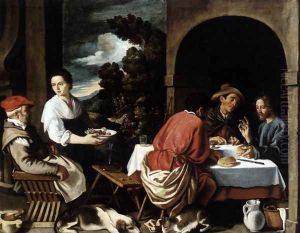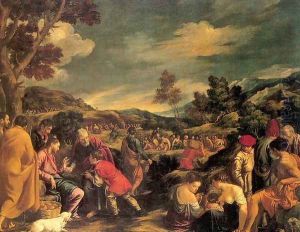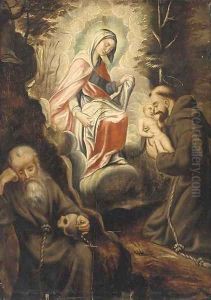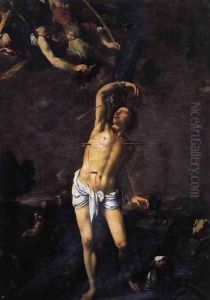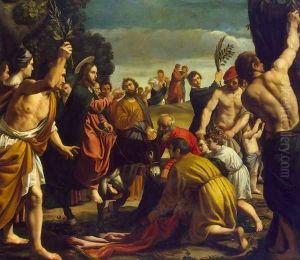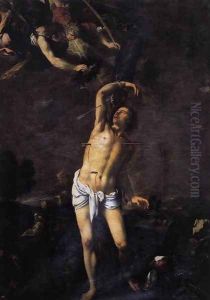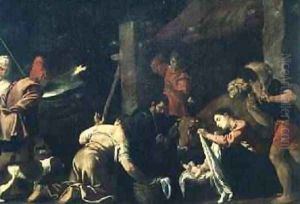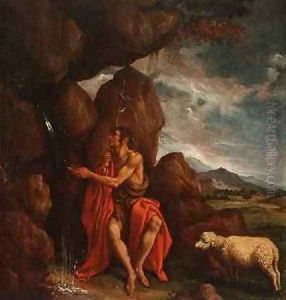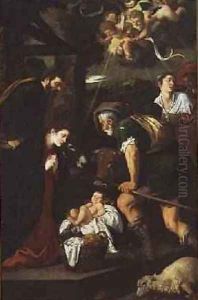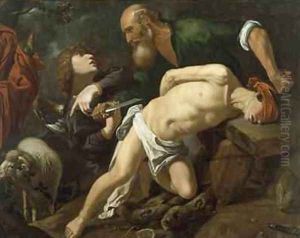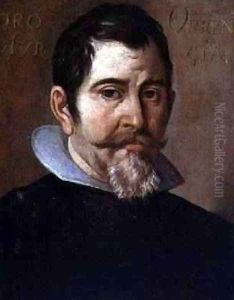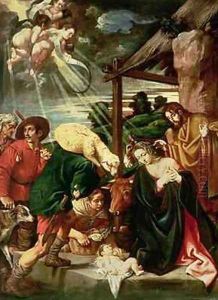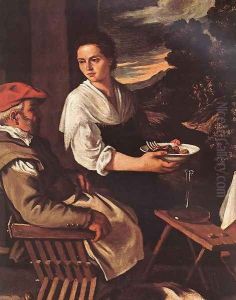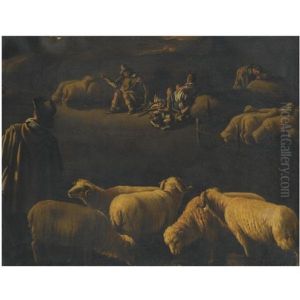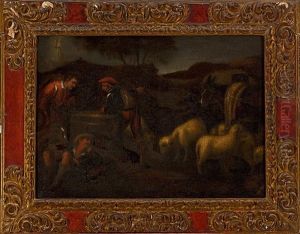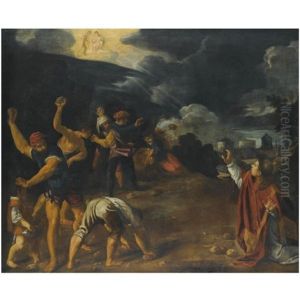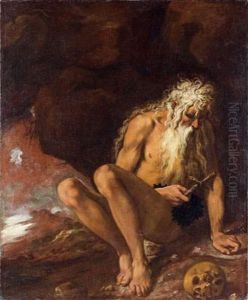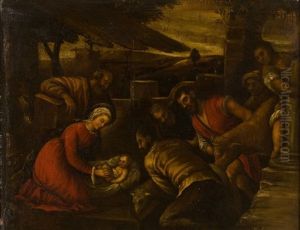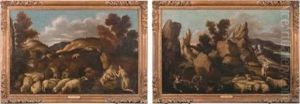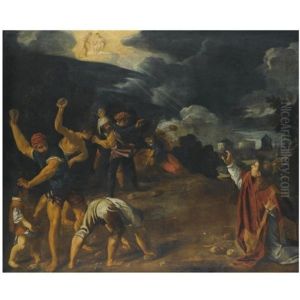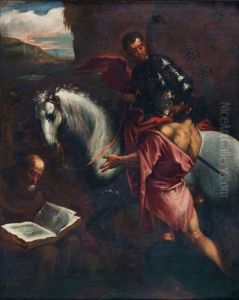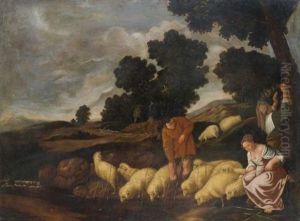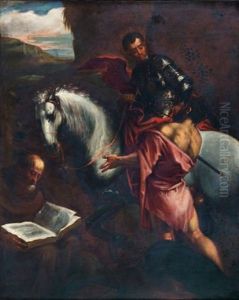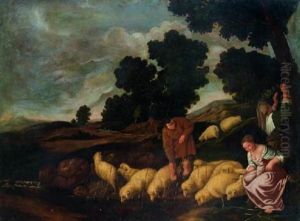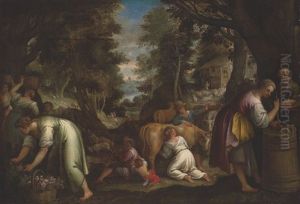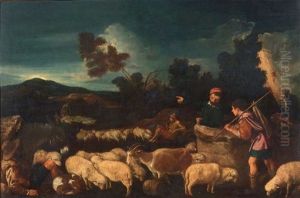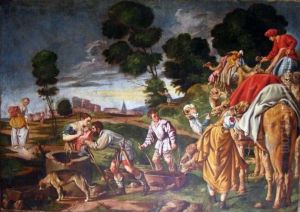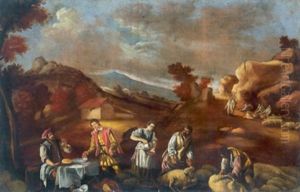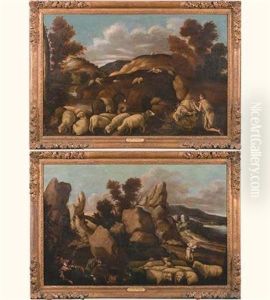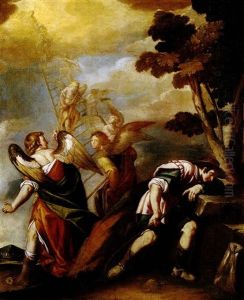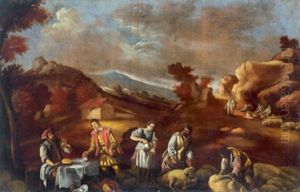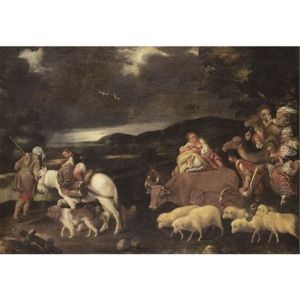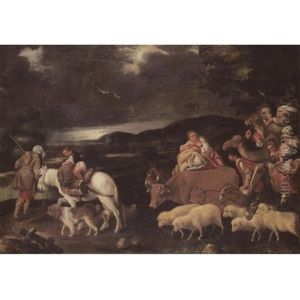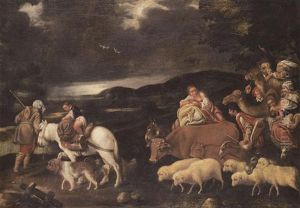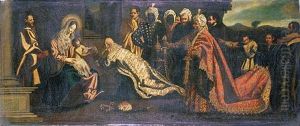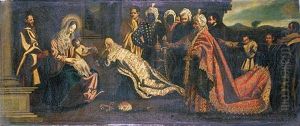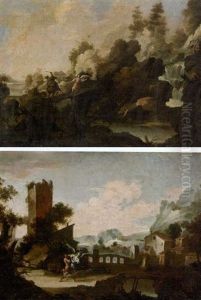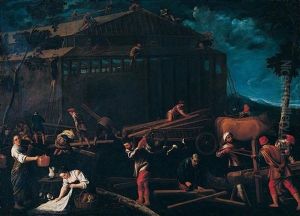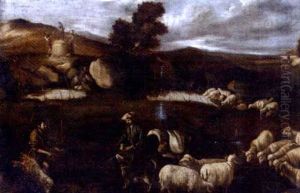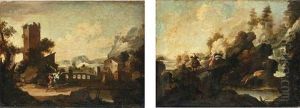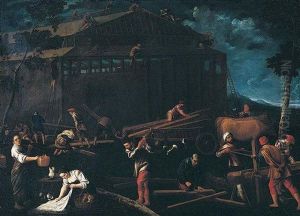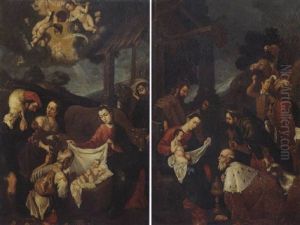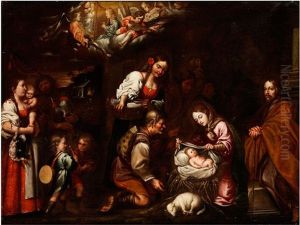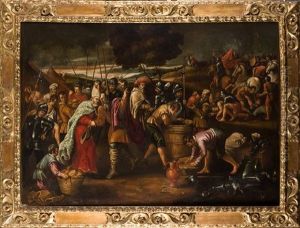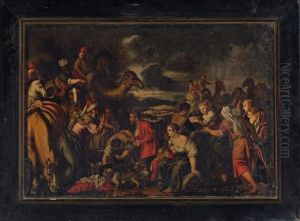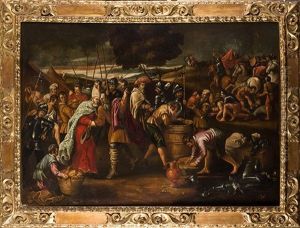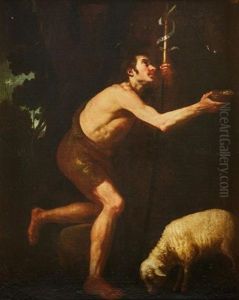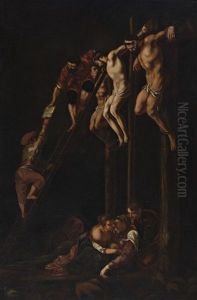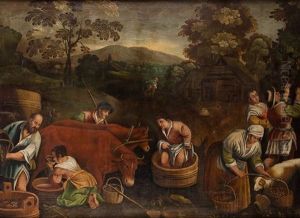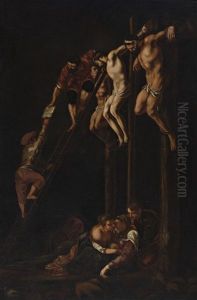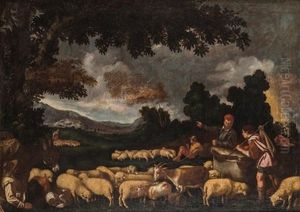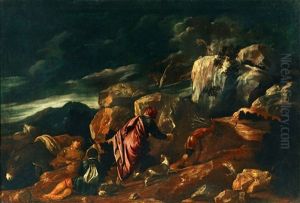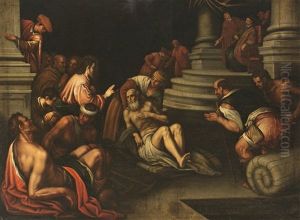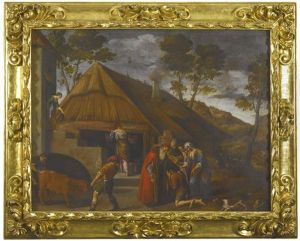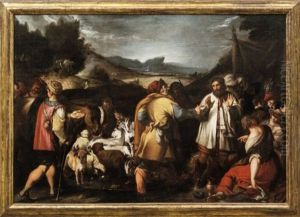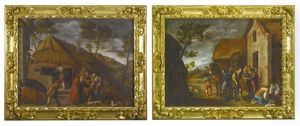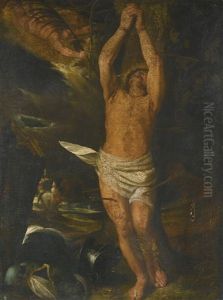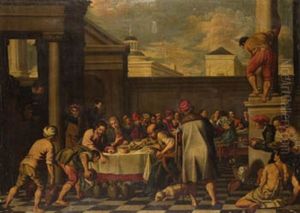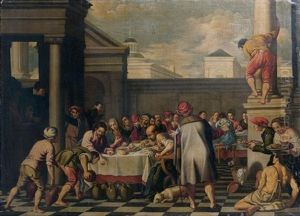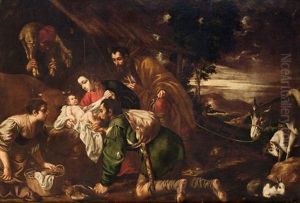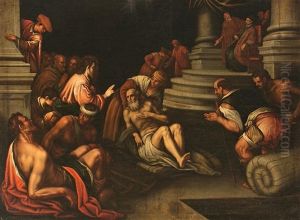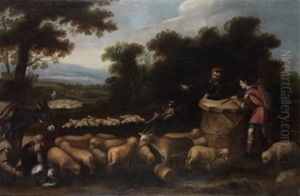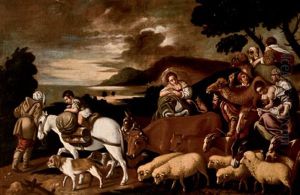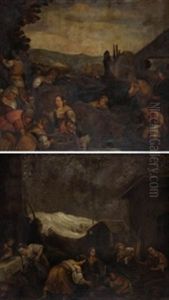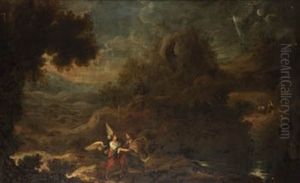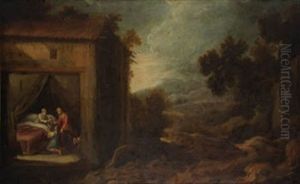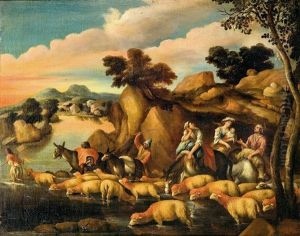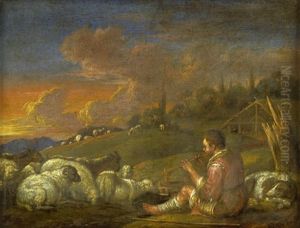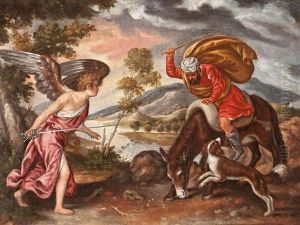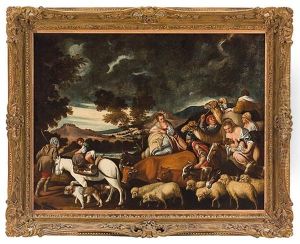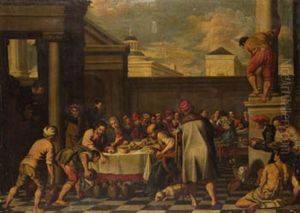Pedro Orrente Paintings
Pedro Orrente, often dubbed as the 'Spanish Bassano', was a prominent figure in Spanish Baroque painting. Born in Murcia, Spain, around 1580, Orrente is celebrated for his skill in landscape and biblical scenes, showing a remarkable ability to blend the influence of Venetian painting with Spanish traditions. His early life is somewhat obscure, but it is believed that he traveled to Italy early in his career, where he was profoundly influenced by the works of Jacopo Bassano, leading to his nickname. This Italian sojourn was crucial; Orrente absorbed the Venetian colorism and pastoral themes, which he later adeptly integrated into his works back in Spain.
Orrente’s return to Spain marked the beginning of his prolific period. He worked in various cities, including Seville, where he contributed significantly to the development of landscape and religious painting. His style was characterized by a robust naturalism, vibrant use of color, and dynamic compositions that echoed the Venetian influence yet were unmistakably rooted in the Spanish painting tradition. Orrente was also known for his ability to depict light and shadow effects, adding a dramatic flair to his biblical narratives and landscapes.
Despite his Italian influences, Orrente's work was deeply Spanish, often focusing on themes and subjects that resonated with the local audience. He was adept at incorporating Spanish cultural elements into his paintings, making his work popular among the Spanish nobility and religious institutions. His ability to navigate between the sacred and the profane, the local and the foreign, allowed him to maintain a successful career throughout his life.
Orrente’s contributions to Spanish art were not limited to his paintings. He played a significant role in training the next generation of Spanish painters, thus ensuring the continuation of his stylistic legacy. His influence can be seen in the works of many Spanish Baroque artists who followed him.
Pedro Orrente passed away in 1645, leaving behind a rich oeuvre that continues to be celebrated for its artistic merit and historical importance. His work is preserved in several major museums and collections, both in Spain and internationally, serving as a testament to his skill and creativity. Orrente remains a pivotal figure in the study of Spanish Baroque painting, his works offering insight into the cultural and artistic exchanges between Spain and Italy during the early 17th century.
